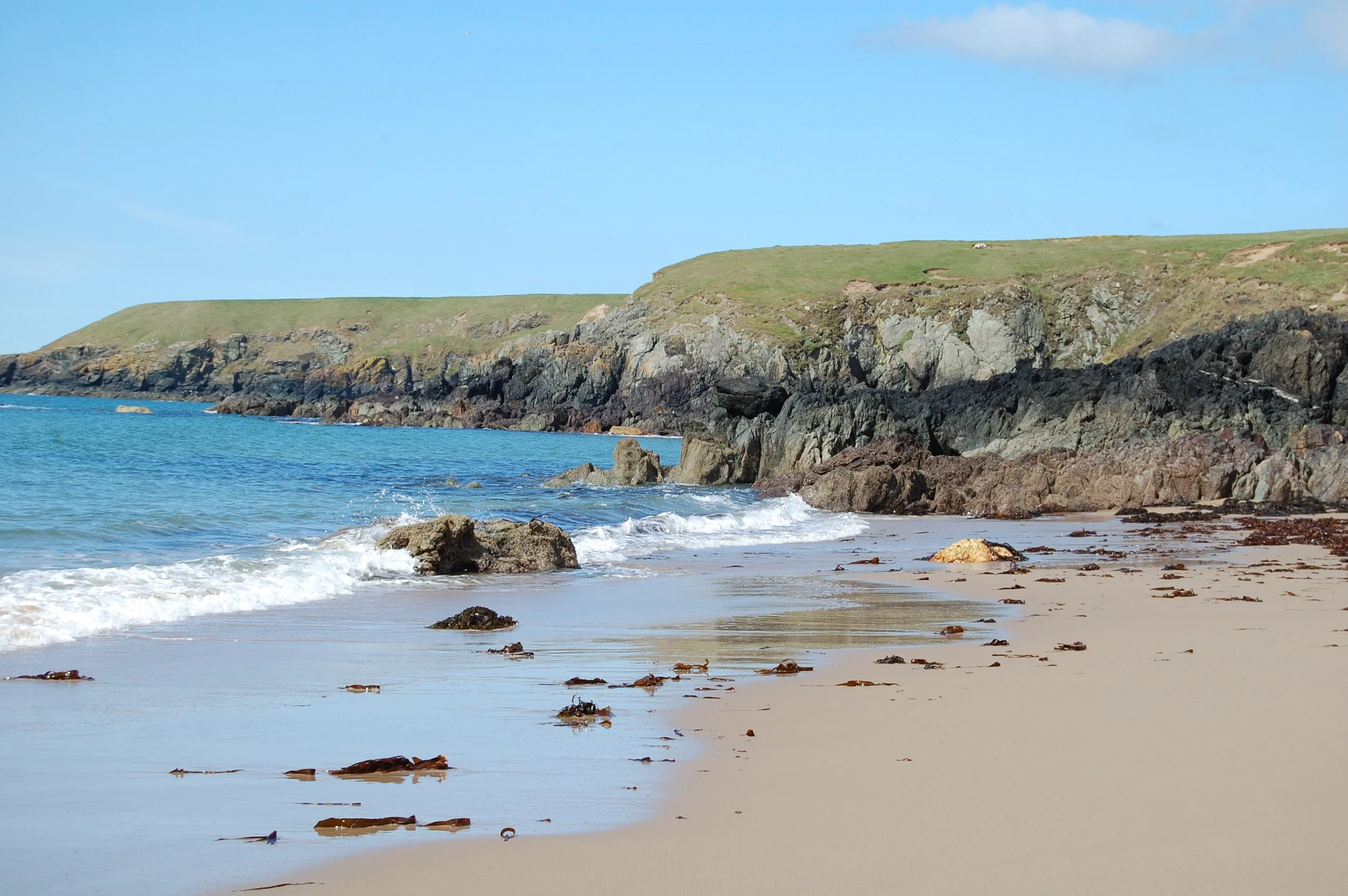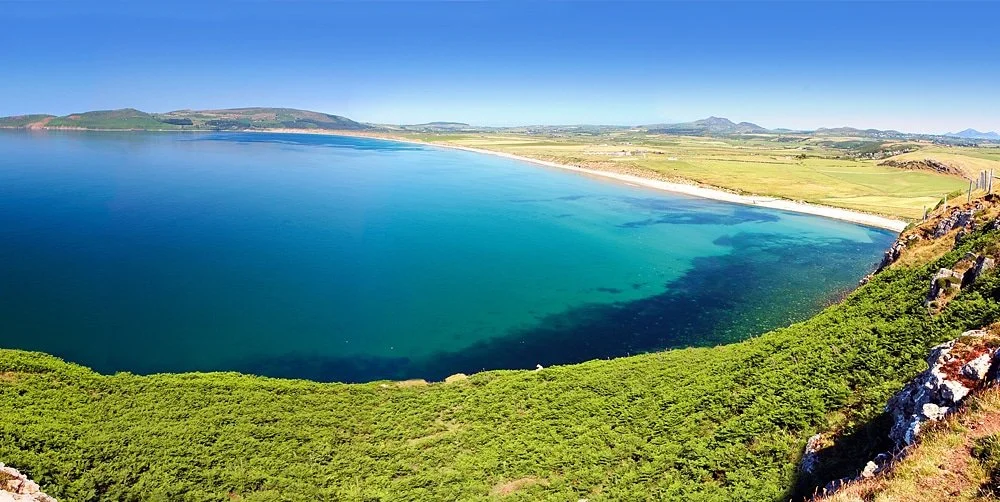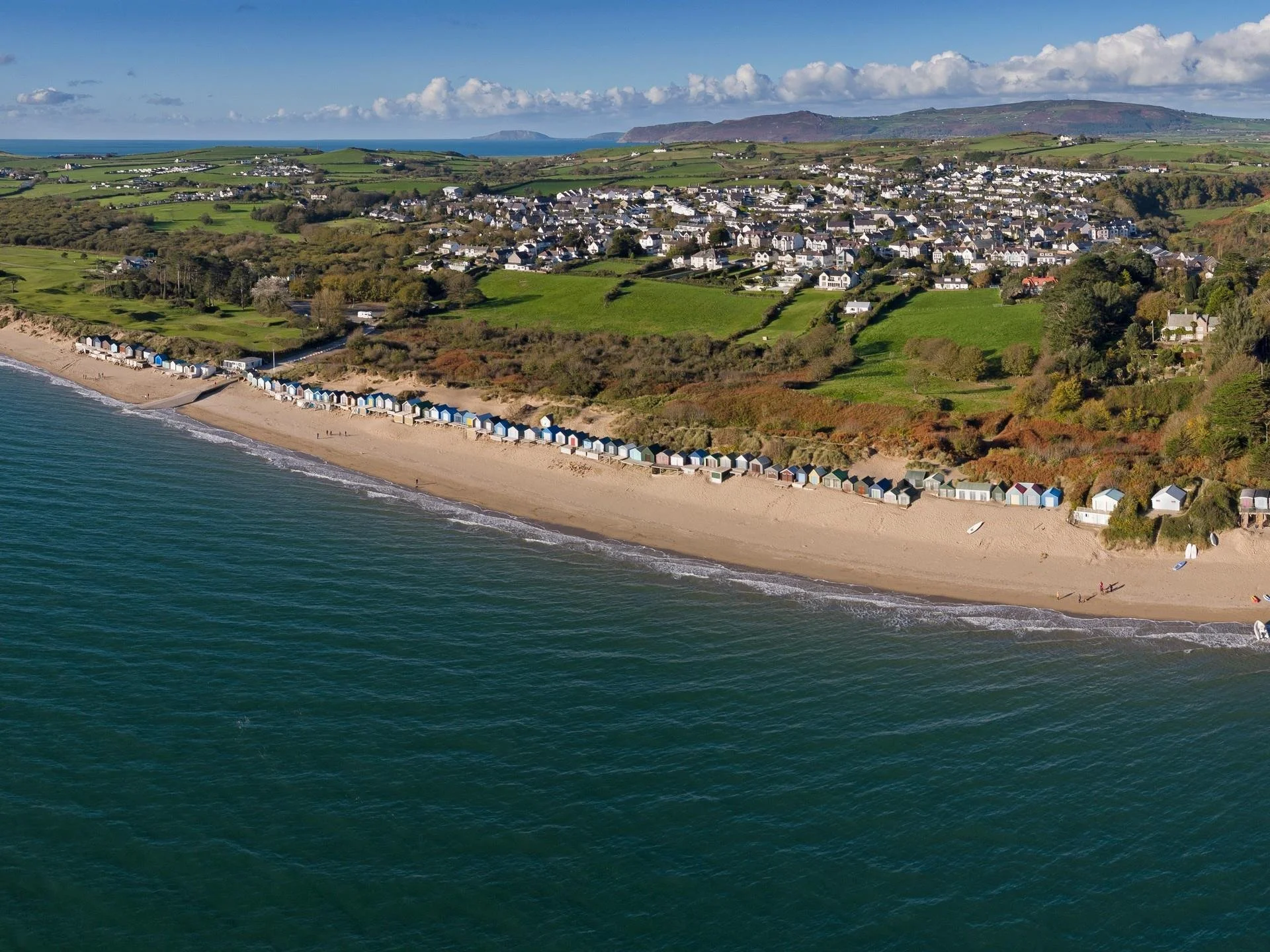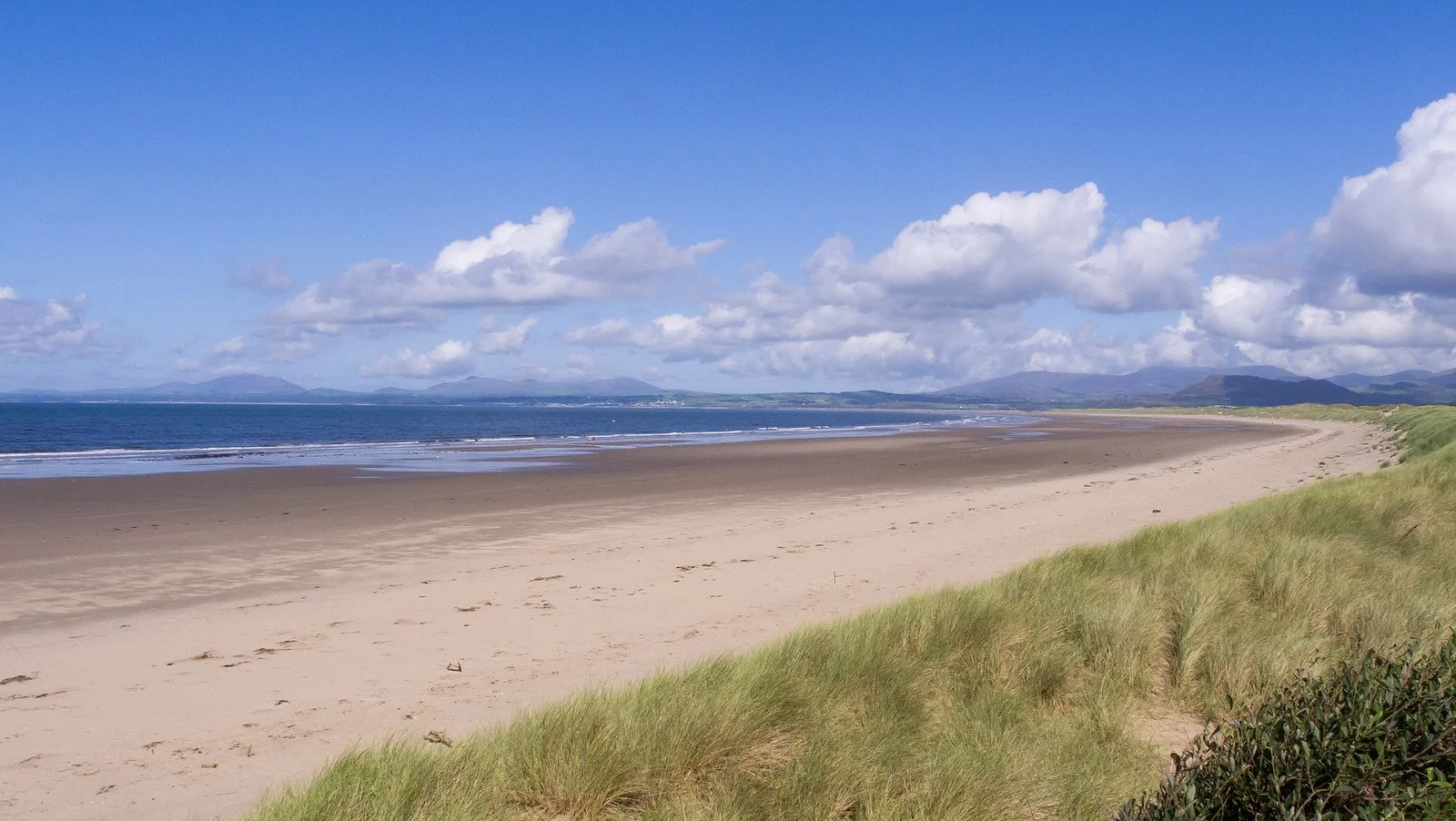Southern Beaches
Aberdaron Beach
Aberdaron is one of our favourite locations on the Peninsula. It’s the most westerly accessible beach and serves as the Peninsulas own version of Lands End.
The village has a glorious sandy beach with easy access (including disabled access). The picturesque village, on Llŷn’s western tip bordering spectacular seas, is home to many water sports – including surfing and wakeboarding – and hosts an annual sailing regatta. Dogs are welcome on the beach, if they keep to the left side of the slipway. There is a watercraft exclusion zone in place to protect swimmers. There’s a good choice of boat trips too, from fishing expeditions to a journey across to Bardsey, the heritage- and wildlife-rich ‘Isle of 20,000 Saints’. Plentiful car parking, shops and cafés are other plus-points.
Porth Neigwl - Hell’s Mouth
This beach’s dramatic English name is based not just on its semicircular shape resembling a wide, open mouth. Its hellish dimension comes from a savage, south-westerly aspect that offers precious little shelter to sailors. Surfers, on the other hand, treat it as a Nirvana of consistently good waves, especially at the north end of the beach. The beach of golden sand with a scattering of pebbles extends for about four miles.
https://www.visitsnowdonia.info/porth-neigwl-hells-mouth
https://www.visitwales.com/attraction/beach/porth-neigwl-hells-mouth-beach-182137
Porth Ceiriad
This delightful beach is something of a secret gem. It lies a good fifteen to twenty minutes from the nearest car park and requires a trek across fields and then a scramble down to the beach itself. However it’s seclusion is the reason it is almost always a quiet and sometimes deserted stretch of gold sand. Even in the high season you could well be sharing it with only a few dedicated surfers and kayakers. If you can reach it you won’t be disappointed.
https://www.nationaltrust.org.uk/features/porth-ceiriad
https://www.thebeachguide.co.uk/north-wales/gwynedd/porth-ceiriad.htm
Abersoch - Machroes
Abersoch is a popular and fashionable village and marina, with a sheltered harbour and lovely sandy beaches. The marina offers boat trips and the village contains many cafes, bistros, designer outlets and craft shops. The main beach at Abersoch sweeps to the east and joins with the equally delightful beach at Machroes. At the southern end of Machroes beach there is a small car park, a café that overlooks the sand, a picnic area, a shop, and public toilets.
https://www.visitsnowdonia.info/abersoch
https://en.wikipedia.org/wiki/Abersoch
https://www.visitsnowdonia.info/machroes-beach
https://www.thebeachguide.co.uk/north-wales/gwynedd/machroes.htm
LLanbedrog
Llanbedrog’s colorful beach huts, resembling a line of toy-town sentry boxes, are the first feature that captures the eye (you can rent them by the day or week). They almost – but not quite – eclipse the beach’s location and views, which get even better if you follow the path to Mynydd Tir y Cwmwd, the headland above which commands far-reaching vistas across the bay. Llanbedrog’s south-facing, sheltered location creates surprisingly warm bathing waters. It’s also ideal for sailing and other water sports. Other activities available locally include sea and river fishing and pony trekking. The sandy beach and nearby car park are in the care of the National Trust. The Aqua Beach Bar & Cafe is also not to be missed.
It’s difficult to separate the beach at Llanbedrog from the town itself. You cannot really visit one without the other. Within the village is St Pedrogs Church and The Oriel Plas Glyn y Weddw, a Grade II Listed Victorian gothic mansion housing an art gallery and exhibitions. The village also enjoys several pubs, tea rooms and restaurants.
https://www.nationaltrust.org.uk/features/llanbedrog
Pwllheli
Our local town enjoys not one but two long stretches of beach. Glan y Don Beach and Marian-y-De Beach. Glan y Don Beach, which is south-facing, is one of the Llŷn Peninsula’s ‘best-kept secrets’, and can be found at the rear of the new Welsh National Sailing Academy and Events Centre (Plas Heli). It’s around three miles long, covered in fine sand and pebbles and backed by sand dunes. Marian-y-De Beach is mainly shingles, and stretches from Gimblet Rock, across the beautiful promenade toward Llanbedrog. Near to this beach there are toilets, a play area and a skate park. Dogs are welcome all year round but there are dog restriction areas on the beach in the high season. The beach is just south of Pwllheli’s bustling town centre, so all facilities are close at hand. During the summer months the area becomes a hive of visitors, since hotels, clubs and cafes are all within easy access
https://www.thebeachguide.co.uk/north-wales/gwynedd/pwllheli.htm
Criccieth Beach
Criccieth’s two beautiful beaches are separated by its prominent – and still powerful – medieval castle, perched on a small headland. The eastern beach is pebbly and better for children, since its shallow water makes it a safer place for them to play. Here you’ll find the Lifeboat Station and a convenient car park. There is also a watercraft exclusion zone and separate areas that allow dogs. The western beach, a mix of sand and pebbles, extends along Marine Crescent to Marine Terrace. Both beaches are sheltered from the prevailing westerly weather and are lapped by the warm waters of the Gulf Stream. At low tide they are popular with walkers who come to take in the magnificent views of Cardigan Bay, the mountains of Snowdonia and Mid Wales.
https://www.visitsnowdonia.info/criccieth-beach
https://www.thebeachguide.co.uk/north-wales/gwynedd/criccieth.htm
Harlech beach
Harlech Beach provides a four-mile stretch of pristine golden sand, with stunning views of the Snowdonia mountain range. The beach is backed by grassy dunes, the reason behind the area’s designation as a National Nature Reserve and Site of Special Scientific Interest. There’s good access to the beach from a 400m path which runs from the car park close to the railway line crossing. Near the beach there’s a shop and café
The Morfa Harlech National Nature Reserve at the north end of the beach is Wales’s only growing dune system and provides a good example of the effects of longshore drift. To the south lies Shell Island, a promontory which, as the name suggests, has an abundance of shells.
https://www.visitsnowdonia.info/harlech-beach
https://www.thebeachguide.co.uk/north-wales/gwynedd/harlech.htm
Black Rock Sands - Morfa Bychan
A unique feature of this beach is that you can bring your vehicle onto the sand (for a fee) and park more or less anywhere. This would be great for anyone with limited mobility to easily reach the sand. There is however very limited alternative parking with no official car park. In the summer the beach can become very popular so it may be worth thinking about it’s suitability if you are a dog owner or have young children. Cars are regularly on the move arriving and leaving the beach. It’s also worth mentioning that now and then vehicle owners forget about the tides. Social Media is rich with video and photos of cars disappearing under the waves, so best to stay close to your car and watch the tides.









